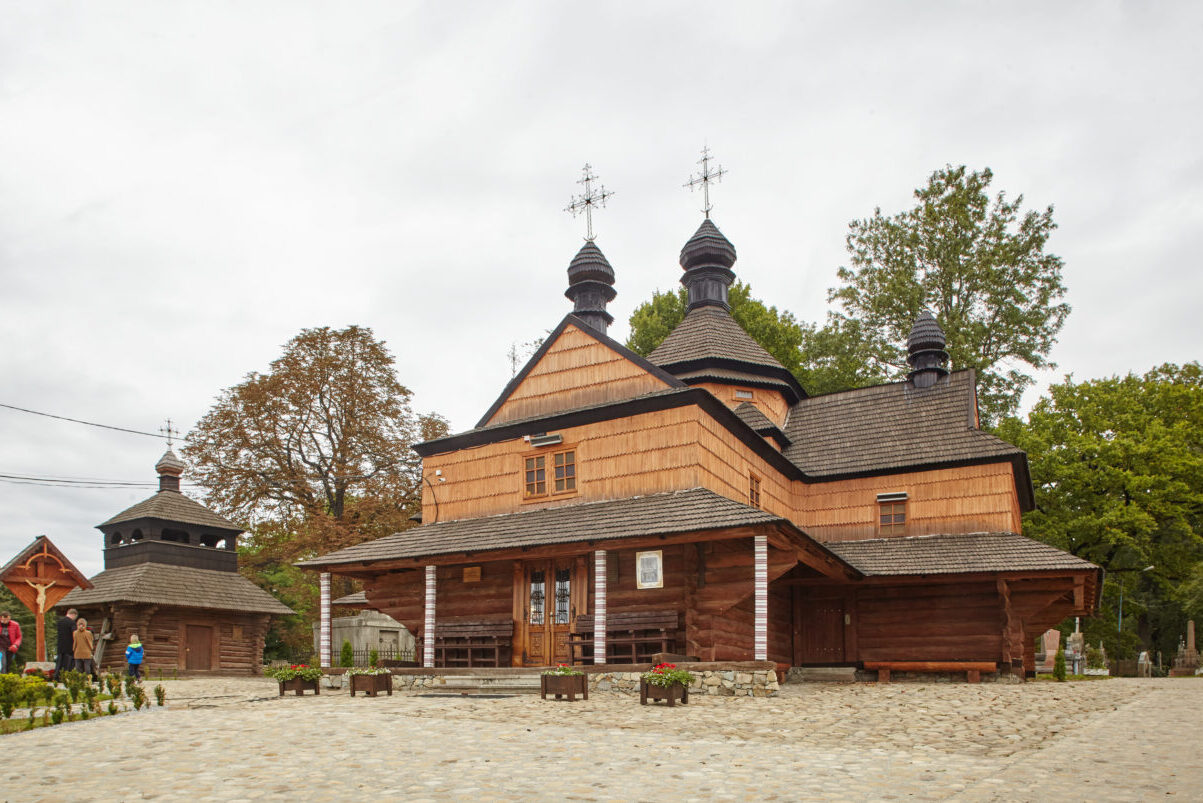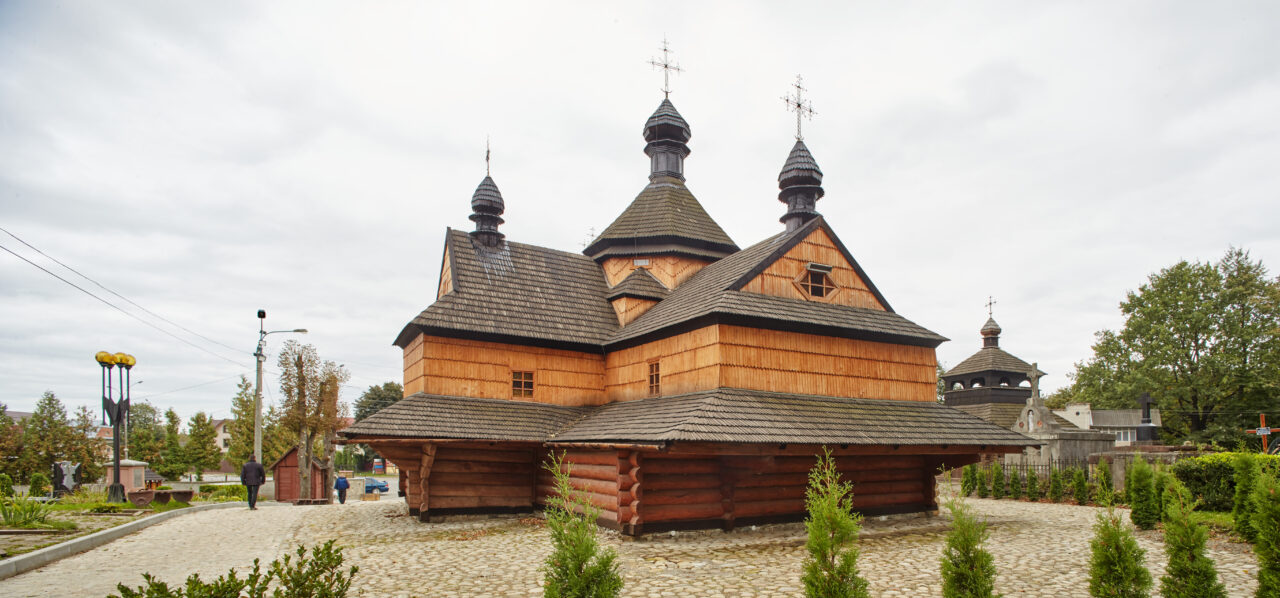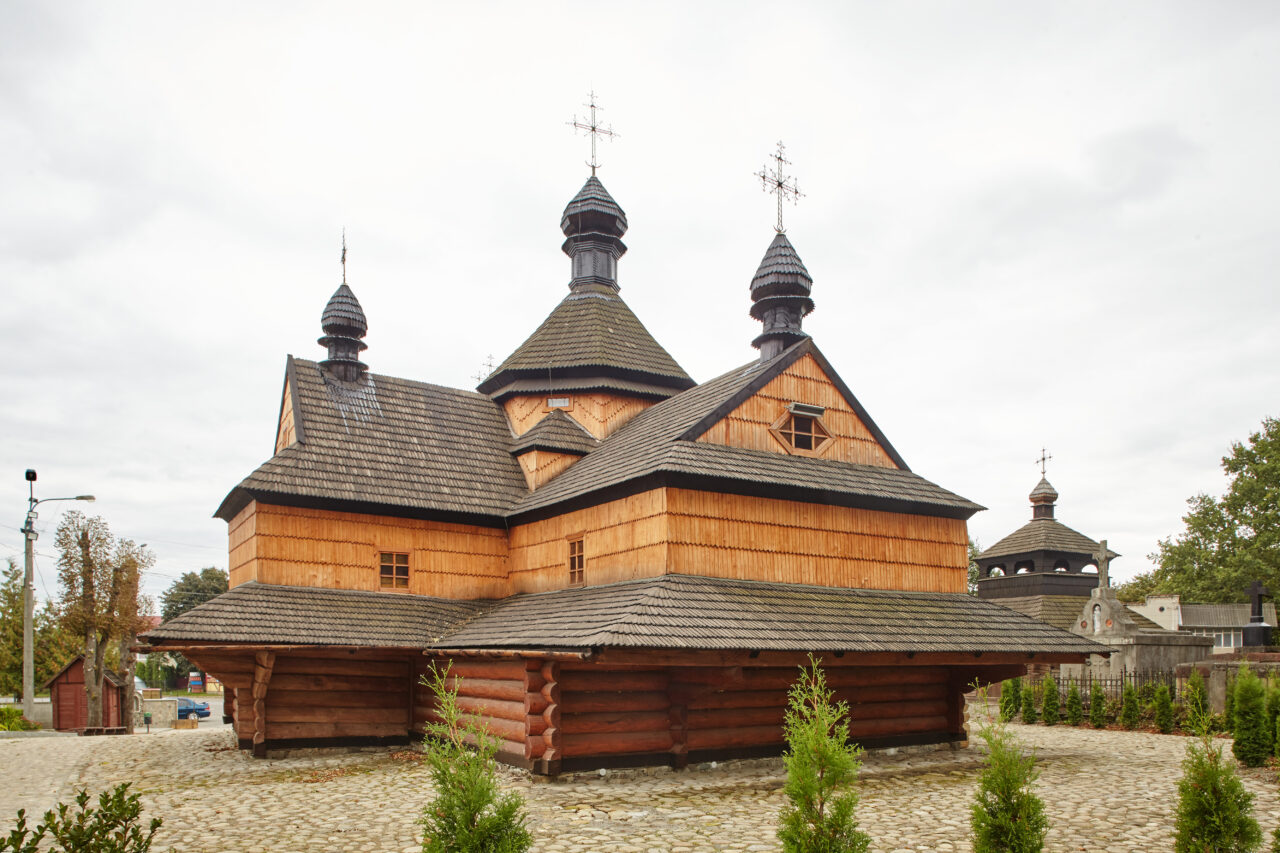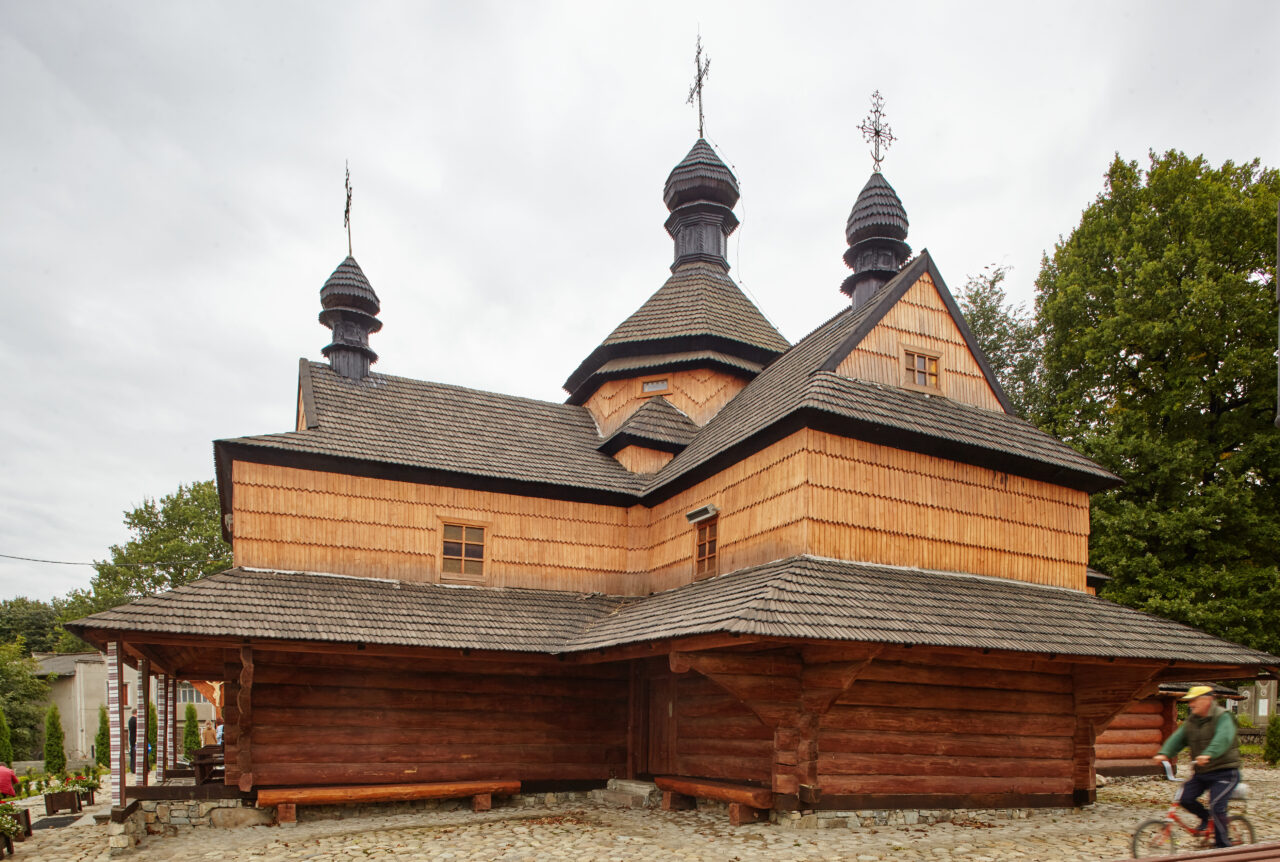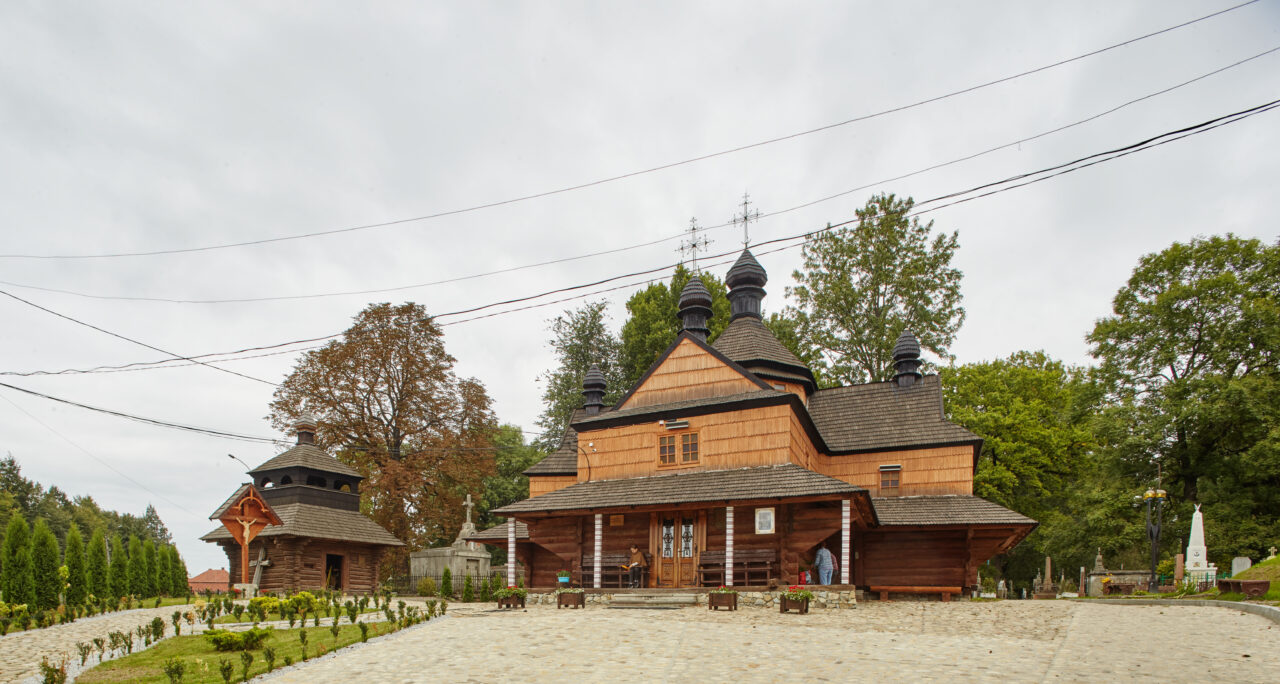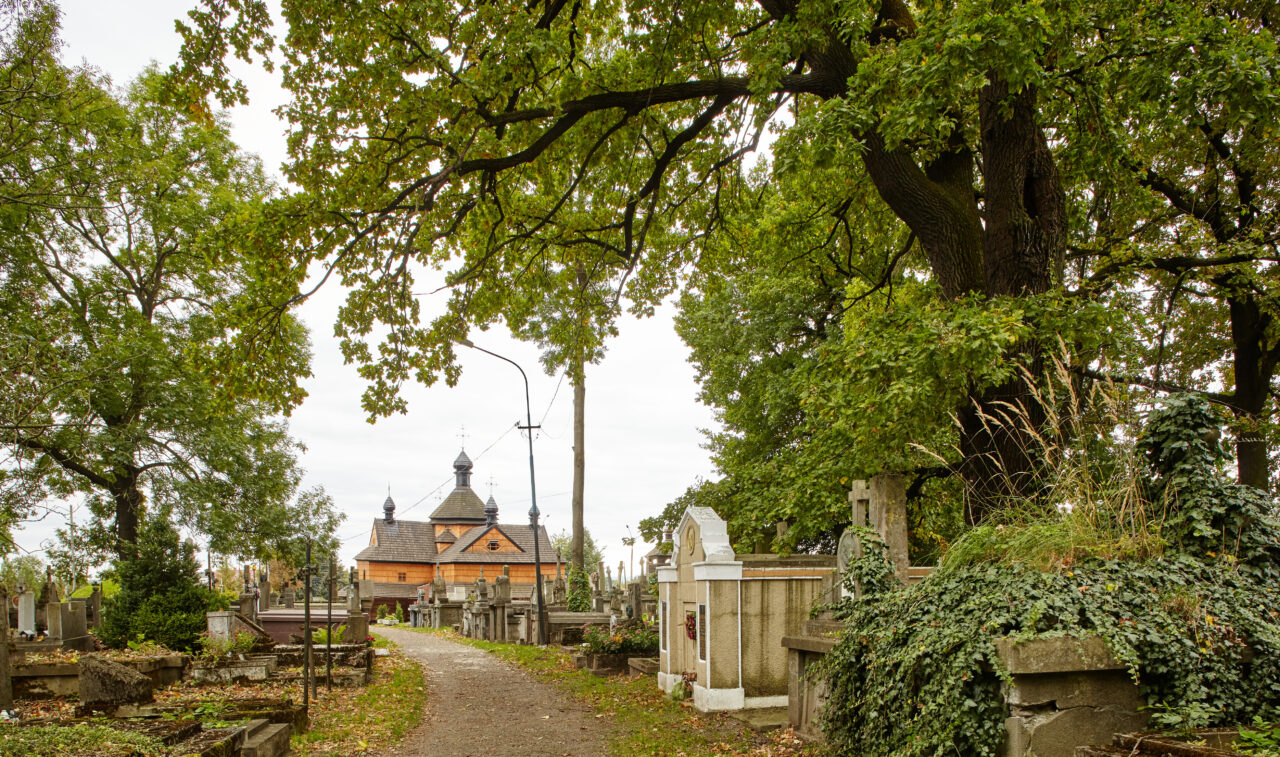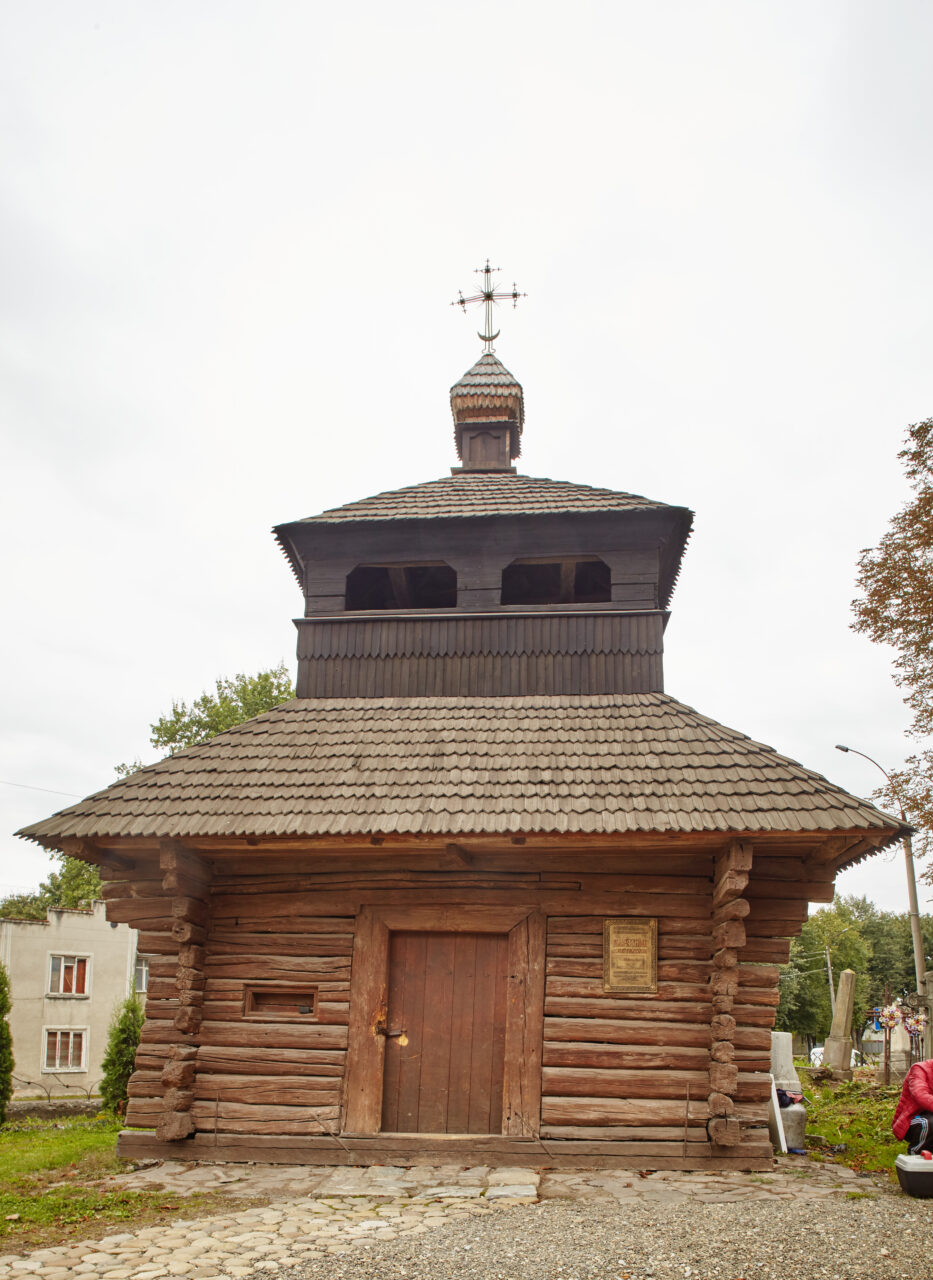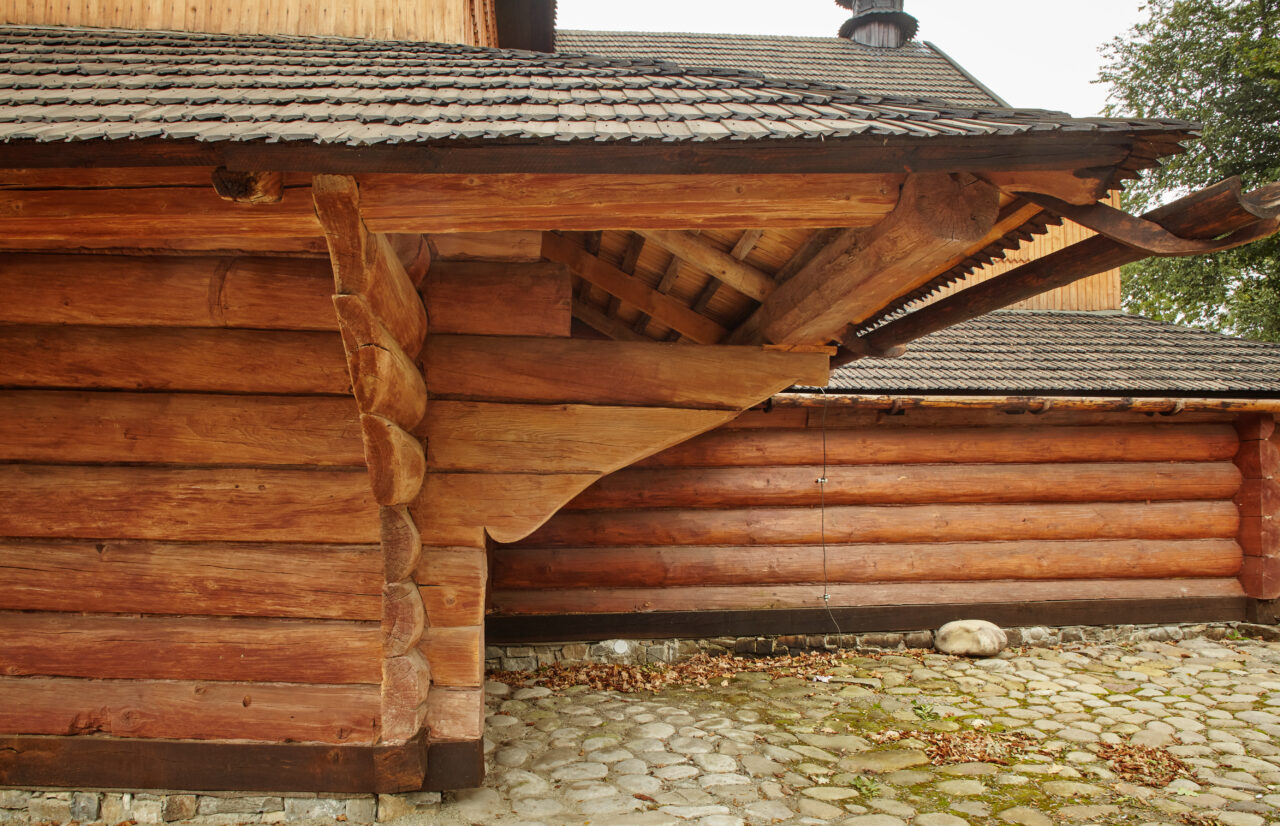The church stands in the old cemetery, which was once located on the western outskirts of Kolomyia but nowadays resides within the city, which has sprawled substantially over time. The first wooden church was built in 1587 without a single nail and initially was the three-nave single-domed building.
Legend has it that there once stood an Orthodox monastery where the Chumaks who transported salt to the distant places stopped over to pray. Therefore, it was popularly known as the Monastery Church. In 1589, the Tatars invaded, destroyed and burned Kolomyia, the monastery, which included the church, was not reconstructed but the church rose from the ashes. For a long time, it was the only church in Kolomyia. For centuries, people have been spreading a folk tale that during the Khmelnytsky Uprising Bohdan Khmelnytsky himself was present at the Liturgy in the church celebrating his victory over the Poles.
The contemporary church was constructed in 1709, later two more naves were added on the north and south sides of the church, giving it a cruciform shape.
In 1845, under Fr. Ivan Ozarkevych the church was reconstructed (expanded). Nowadays it is wooden, cross-in-square, five-nave, single-domed building. All naves are quadrangular and horizontally elongated. The central nave is slightly higher than the side ones, covered with an octagonal roof, topped with a dome. The side shoulders are covered with gabled roofs with domes on the ridges. The building is surrounded by a wide canopy on ornate brackets, which turns into a porch in front of the narthex.
For a long time during the Soviet period, it was unavailable for the worshippers, later the church hosted an Easter eggs painting museum and in 1990 the church was returned to the community.
Architectural monument of national importance.

